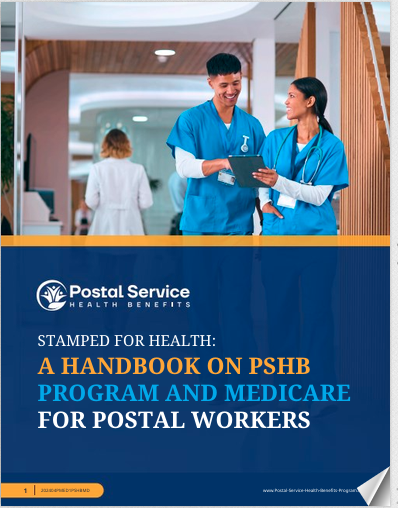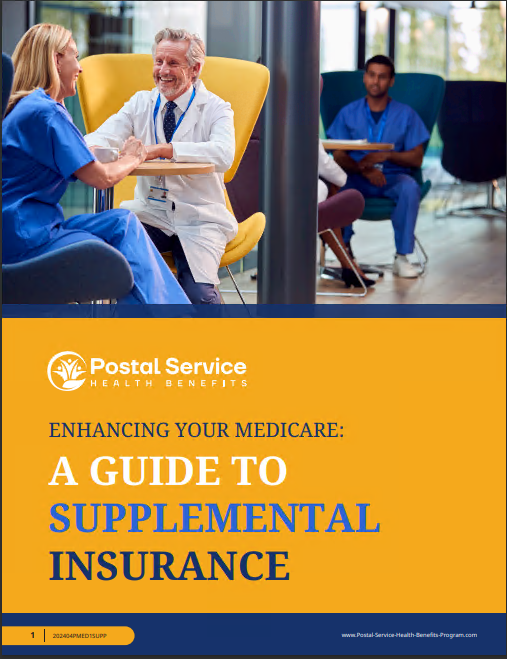Key Takeaways
- The collaboration between PSHB and Medicare offers Postal retirees a streamlined approach to healthcare coverage.
- Understanding how PSHB and Medicare interact can help retirees maximize their benefits and navigate the new system effectively.
PSHB and Medicare: How They Work Together for Postal Retirees
The Postal Service Health Benefits (PSHB) program, in conjunction with Medicare, brings a new dynamic to healthcare coverage for Postal retirees. As these changes unfold, it’s essential for retirees to understand how these two systems work together, what they can expect, and how to make the most of their benefits. This article breaks down the intricacies of PSHB and Medicare, offering practical insights for Postal retirees.
What is PSHB and How Does It Affect Retirees?
The PSHB program is a healthcare initiative designed specifically for Postal Service employees and retirees. It aims to provide tailored health benefits that address the unique needs of this group. For retirees, this means transitioning from the Federal Employees Health Benefits (FEHB) program to PSHB, which may offer different plans and benefits more suited to their healthcare requirements.
The main impact of PSHB on retirees is the shift in available health plans and the potential changes in costs associated with premiums, deductibles, and co-pays. Retirees need to familiarize themselves with these new options and understand how their current healthcare coverage might change. It’s also crucial to note that PSHB plans are designed to coordinate effectively with Medicare, which brings us to the next point.
Getting to Know Medicare: The Basics
Medicare is a federal health insurance program primarily for individuals aged 65 and older, though it also covers some younger people with disabilities. Medicare consists of different parts, each covering specific services:
- Medicare Part A: Covers inpatient hospital care, skilled nursing facility care, hospice, and some home health care.
- Medicare Part B: Covers outpatient care, preventive services, ambulance services, and durable medical equipment.
- Medicare Part C (Medicare Advantage): Offers an alternative to Original Medicare (Parts A and B), provided by private insurance companies that contract with Medicare. These plans often include additional benefits like vision, dental, and prescription drug coverage.
- Medicare Part D: Provides prescription drug coverage, also offered through private insurers.
Understanding these components is vital as retirees navigate their healthcare options under PSHB, ensuring they maximize their benefits by effectively coordinating with Medicare.
How PSHB and Medicare Work Hand-in-Hand
PSHB and Medicare are designed to complement each other, providing comprehensive healthcare coverage for Postal retirees. Here’s how they work together:
-
Primary and Secondary Payers: Typically, Medicare becomes the primary payer for retirees eligible for it, while PSHB acts as the secondary payer. This means Medicare covers a significant portion of healthcare costs first, and PSHB covers some or all of the remaining costs, depending on the plan.
-
Coordinated Benefits: PSHB plans are structured to work seamlessly with Medicare, ensuring that retirees don’t face gaps in coverage. This coordination helps reduce out-of-pocket expenses and simplifies the billing process.
-
Enhanced Coverage Options: By combining Medicare with PSHB, retirees may access additional benefits not covered by Medicare alone. This can include services like dental, vision, and hearing care, which are often part of PSHB plans.
What Changes Can You Expect with PSHB?
As PSHB rolls out, retirees can expect several key changes:
-
New Plan Choices: PSHB offers a range of plans specifically designed for Postal Service retirees. These plans might provide more relevant benefits compared to the previous FEHB plans.
-
Cost Adjustments: While the exact costs will vary based on individual circumstances and plan choices, retirees should be prepared for potential changes in premiums, deductibles, and co-pays. It’s essential to review these aspects carefully to understand the financial implications.
-
Enrollment Process: The enrollment process for PSHB may differ from FEHB. Retirees will need to follow new procedures and timelines to ensure they maintain continuous coverage.
Navigating the New Coverage Options
Transitioning to PSHB requires careful consideration and planning. Here are some steps retirees can take to navigate their new coverage options:
-
Review Available Plans: Take the time to thoroughly review the health plans offered under PSHB. Compare the benefits, costs, and coverage options to find the plan that best meets your needs.
-
Understand Medicare Coordination: Ensure you understand how your chosen PSHB plan coordinates with Medicare. This includes knowing which services are covered by Medicare and which are covered by your PSHB plan.
-
Consult with Experts: Don’t hesitate to seek assistance from licensed insurance agents or healthcare advisors. They can provide valuable insights and help you make informed decisions about your coverage.
-
Plan Ahead: Prepare for the enrollment period by gathering all necessary documents and information. This includes your Medicare information, current health coverage details, and any specific healthcare needs you have.
Tips for Choosing the Right Plan
Choosing the right PSHB plan involves several considerations. Here are some tips to help you make the best choice:
-
Assess Your Healthcare Needs: Think about your current and future healthcare needs. If you have chronic conditions or require specific medications, ensure that the plan you choose provides adequate coverage.
-
Compare Costs: Look at the premiums, deductibles, co-pays, and out-of-pocket maximums for each plan. Consider how these costs align with your budget and healthcare usage.
-
Check Provider Networks: Ensure that your preferred healthcare providers and facilities are included in the plan’s network. This can help avoid additional out-of-pocket costs for out-of-network services.
-
Consider Additional Benefits: Some PSHB plans may offer additional benefits like dental, vision, and hearing coverage. Consider whether these benefits are important to you and if they justify any additional costs.
How to Maximize Your Benefits
Maximizing your benefits under PSHB and Medicare requires a proactive approach. Here are some strategies to help you get the most out of your coverage:
-
Stay Informed: Keep up-to-date with any changes or updates to PSHB and Medicare. This includes understanding any new benefits, changes in costs, or adjustments to coverage.
-
Utilize Preventive Services: Take advantage of preventive services covered by Medicare and PSHB. These services can help catch health issues early and reduce long-term healthcare costs.
-
Manage Chronic Conditions: If you have chronic conditions, work with your healthcare providers to manage them effectively. This can help prevent complications and reduce the need for more expensive treatments.
-
Review Your Plan Annually: Each year, review your PSHB and Medicare coverage during the open enrollment period. Make any necessary changes to ensure your plan continues to meet your healthcare needs.
Where to Get Help with Your Healthcare Choices
Navigating the complexities of PSHB and Medicare can be challenging, but there are resources available to help:
-
Licensed Insurance Agents: These professionals can provide personalized assistance in understanding your options and selecting the right plan. They can help clarify the details of both PSHB and Medicare coverage.
-
Online Resources: Websites like CMS.gov offer comprehensive information about Medicare, while the Postal Service provides resources specific to PSHB. These sites can help you understand your benefits and coverage options.
-
Healthcare Advisors: If you have specific health conditions or concerns, healthcare advisors can offer guidance on managing your health and maximizing your benefits.
-
Community Organizations: Many community organizations offer support and resources for retirees navigating healthcare changes. These organizations can provide valuable information and assistance.
Coordinating for Better Healthcare
Understanding how PSHB and Medicare work together is crucial for Postal retirees. By coordinating these benefits effectively, retirees can ensure comprehensive healthcare coverage that meets their needs. It’s important to stay informed, review your options carefully, and seek assistance when needed to make the most of your healthcare benefits.
Contact Information:
Email: [email protected]
Phone: 9159008284
Bio:
As a licensed agent, I can help you better understand your Medicare options and help you choose the plan that’s right for you. Finding a plan that provides you with value and access to quality care is important. I welcome the opportunity to discuss how a Medicare plan can fit your budget and lifestyle. I can also find out if you’re eligible for Extra Help and other money-saving programs, as well as assist with your Postal Health Benefits (PSHB). Please contact me at your convenience to learn more!






